The Topsky F7X V2 is a 16:9 42 degree field-of-view FPV goggle. This is the updated V2 release which came 3 months after the failed V1 model from October, 2017. V1 had several issues and most reviewers declared it a failure. Did Topsky fix the issues and are these worth buying? Let's find out.
On paper this sounded like a wonderful new goggle. Unfortunately we were let down. The displays exhibited ghosting, the module bay wasn't the right size and there was a lot of light leakage. Topsky made some mistakes. They did a poor job of planning and testing their product, but they've been working hard to redeem themselves. So that being said, let's take an objective look at these for what they are, $350 goggles. I'll compare them to a number of similarly priced goggles and see how they stack up.
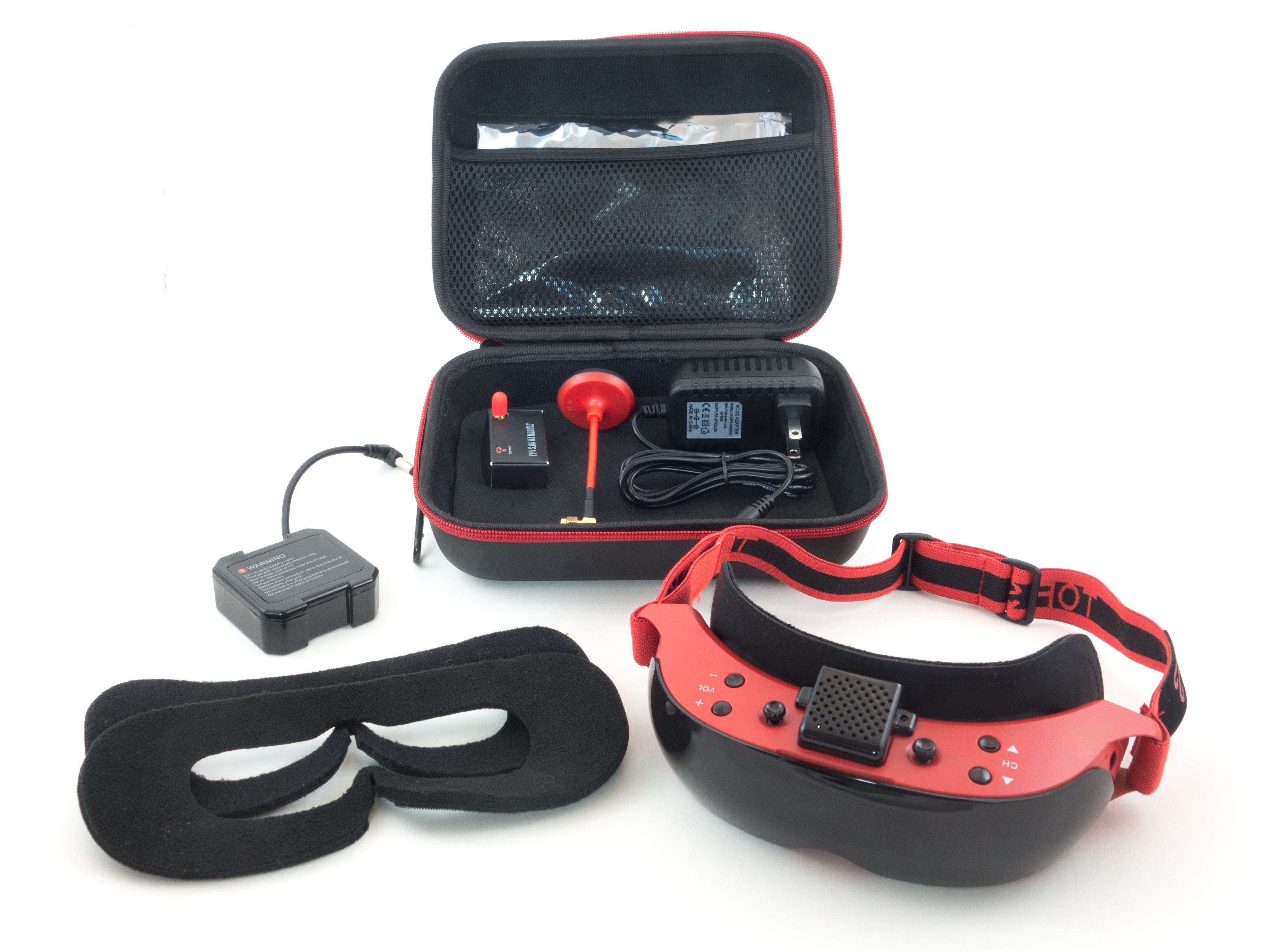
Topsky VS FatShark Dominator V3
The FatShark Dominator V3s are arguably the most popular $300 goggle. The biggest difference between the F7X and the Dom V3s is the field of view. The Dom V3s have a considerably smaller FOV at only 30 degrees. With that in mind the displays are crisp, clear and bright. They don't suffer from any edge blur and the white balance is quite good. On the other hand Topsky offers a far greater FOV at 42 degrees, but there are some caveats particularly concerning the display technology. The displays aren't as bright, the white balance is off, and they suffer from "ghosting".
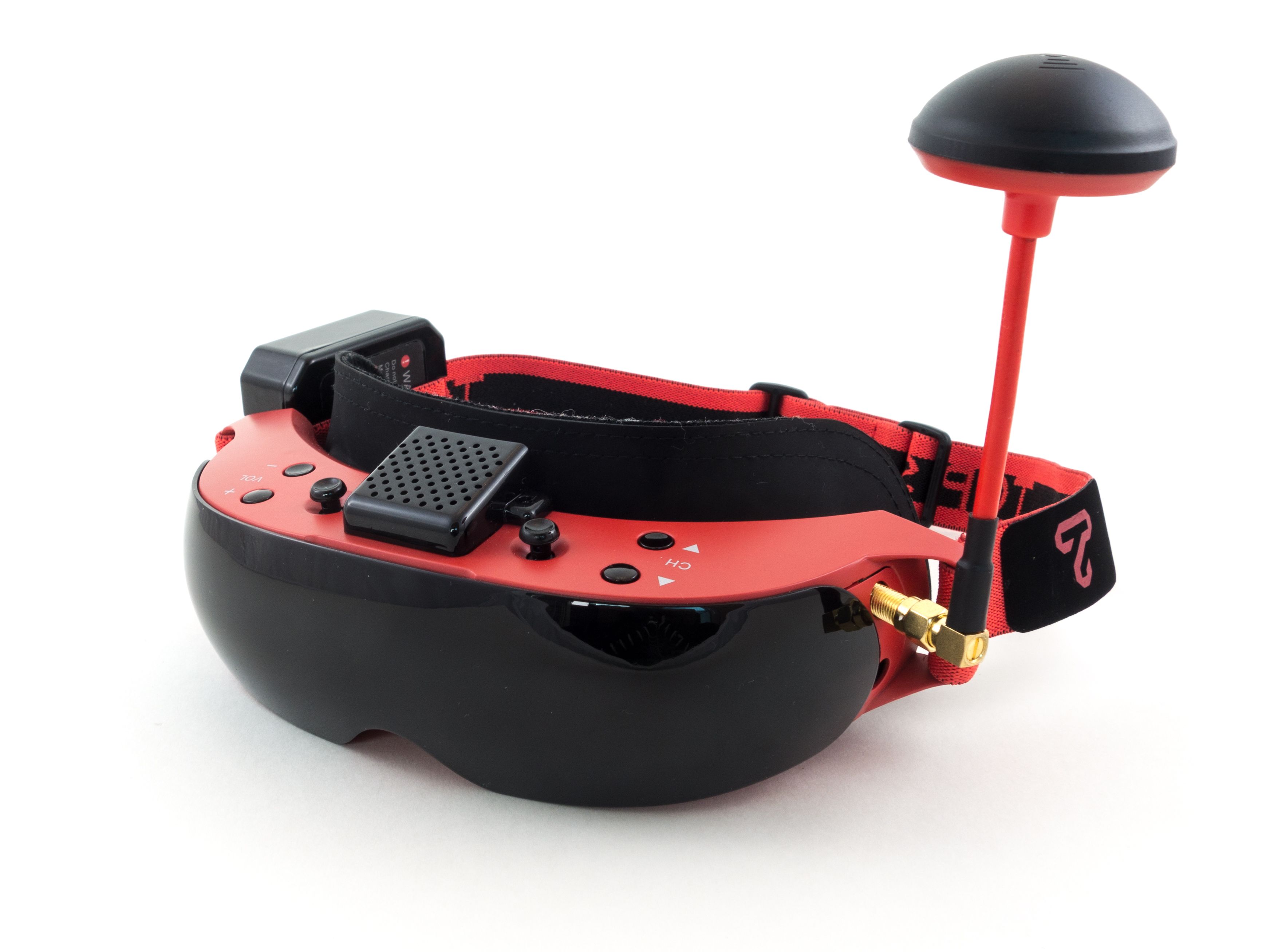
The ghosting is an artifact of the LCoS technology. Liquid crystal on silicon (LCoS) displays are not transparent which means they do not use a backlight. They rely on reflected light and mirrors. Practically speaking the image exhibits a lot more glare than traditional WVGA modules. This is particularly obvious in high contrast elements like OSD lettering. Fortunately this is not a huge issue when flying as we mostly fly in low contrast, outdoor settings.
Topsky VS Aomway Commanders V1
The Aomway Commanders offer nearly identical optics to the Dominator V3s, so a lot of the points I made above are also relevant here. The big difference is that the Commanders use an internal diversity receiver. It works quite well, but you cannot upgrade the receiver. This gives the Topskys a slight edge as they feature a module bay. Now in terms of cost this means you don't need to buy a receiver for the Commanders, but you do need to buy a battery. Topsky includes a 2200mah battery and a charger. Another thing I don't like about the Commanders is the faceplate and the battery placement. They just aren't very comfortable to wear IMO.
Topsky VS FatShark Attitude V4
Now this is a tougher choice. So far all the headsets I've mentioned use 16:9 displays. Aomway lets you crop to 4:3, but it's still 16:9 native. The FatShark Attitude V4s are 4:3 native with a 32 degree FOV. While the FOV is smaller than Topsky's offering the experience is much different. Personally, I prefer 4:3 for the taller vertical space. The Attitude V4s also feature a premium build quality and include an OLED, removable receiver. The displays are quite crisp and despite their lower resolution (640x480) they're just as bright and rich as any other FatShark. Given that they're 4:3 native you've got a lot more camera options plus you get FatShark's customer support. The newer F7X models switch to 4:3, but that's only by cropping down the 16:9 native displays.
Topsky VS FatShark HD3
This isn't a fair comparison because the FatShark HD3s cost a bit more than the Topskys, but maybe you're on the fence about spending the extra money. I've spent a lot of time flying the FatShark HD3s. They're great goggles, but they do have some flaws. Most notably they exhibit edge blur. This can be mitigated with diopters, but it still doesn't go away fully. It's not a major issue when flying, but it's a quirk. Like the Attitude V4s the HD3s have 4:3 native displays and the screens are crisp and bright. The Topskys do not have any obvious edge blur, but the displays just don't have the vibrance of the HD3 SVGA displays.
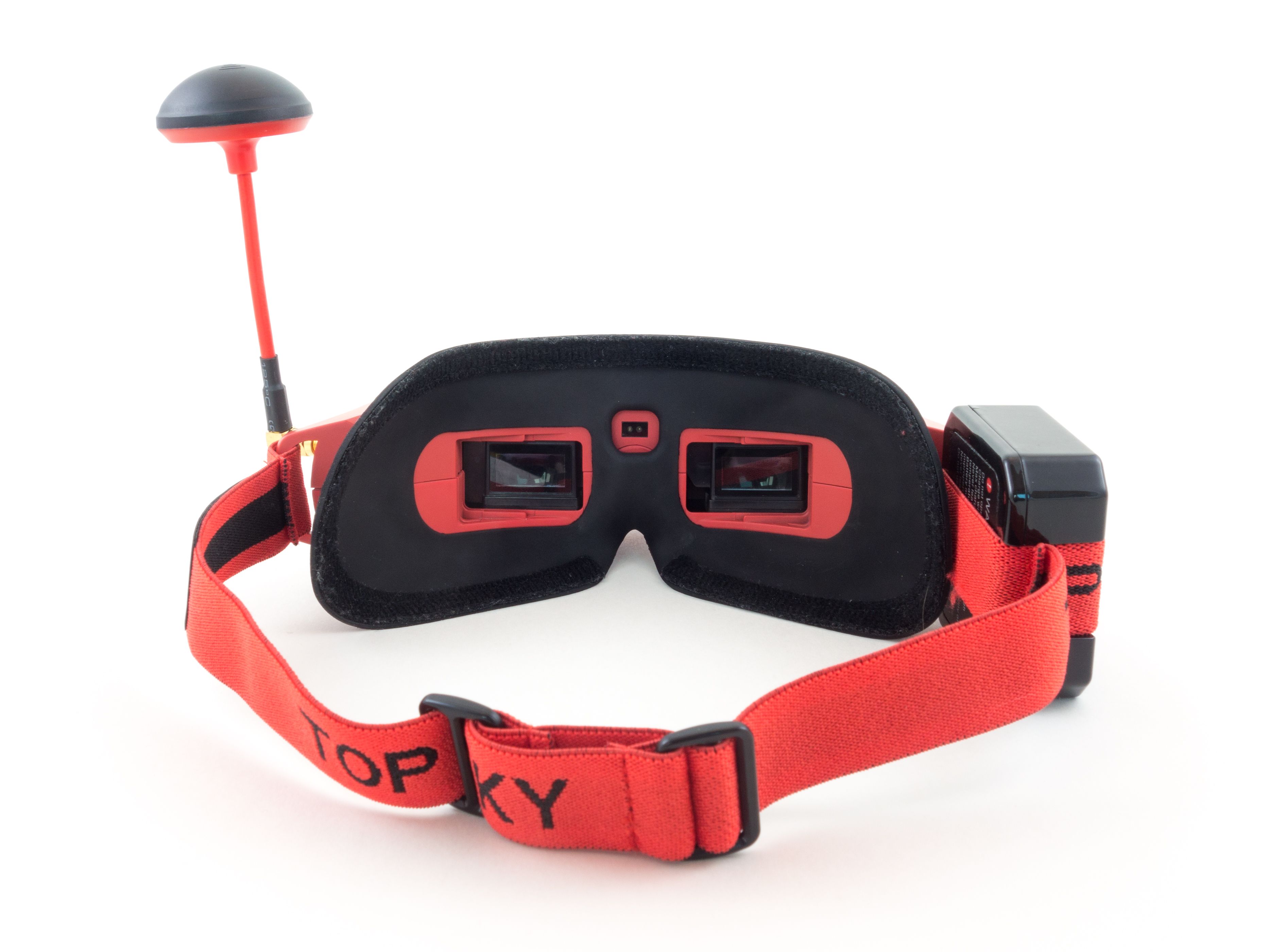
Now if you already own any of these goggles you'll be just fine keeping what you've got. These comparisons are mainly to help you choose your first goggle. If you've got Dom V3s and you're happy with them, then you might as well just hang onto them. You may not find that these are such a big upgrade.
| | Topsky F7X | FatShark Dom V3 | Aomway V1 | FatShark Attitude V4 | FatShark HD3 |
|---|---|---|---|---|---|
| Displays | 1280x720 LCoS | 800x480 WVGA | 800x480 WVGA | 640x480 VGA | 800x600 SVGA |
| FOV | 42° | 30° | 32° | 32° | 42° |
| Aspect Ratio | 16:9 | 16:9 | 16:9 (crops to 4:3) | 4:3 | 4:3 |
| DVR Resolution | 1280x720 | 640x480 | 640x480 | 640x480 | 640x480 |
| Module Support | Yes | Yes | No | Yes | Yes |
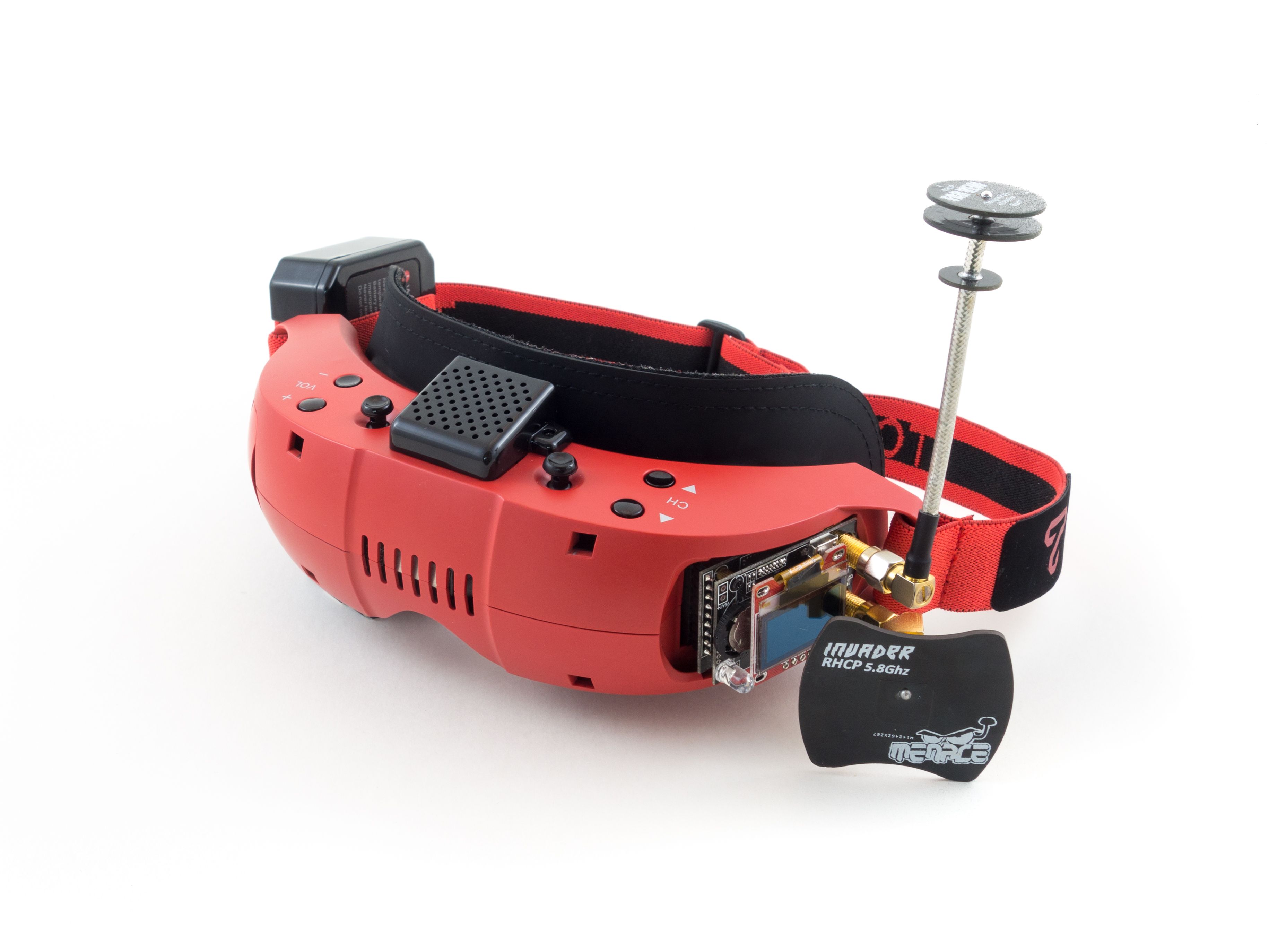
OSD
There isn't much to speak of here. There's a single Brightness, Contrast, and Color (Saturation) menu with the option to toggle between English and Chinese. To open the menu pull the joystick toward you for a couple seconds. It is dismissed in the same manner. Other than that, the frequency appears on the top left corner in a large pixelated font. It is not persistent and only appears when changing channels with the hardware buttons. It is irrelevant when using an OLED receiver. There is also a volume OSD which appears on the bottom of the screen. There are no fancy OSD features like a band scanner or channel selection interface like Skyzone offers.
DVR
The DVR interface is quite different. It uses a different font and is a higher resolution menu. The instruction manual was not very helpful so I put together a little cheat sheet. Legend: Up = Push stick away from you, Down - Pull stick toward you.
- Turn on DVR - Down for 2 seconds (double beep)
- Start Recording - Down (single beep)
- Stop Recording - Down (double beep)
-
Take still image - Right (slow double beep)
- DVR Menu - Long press center
- Play current video - Down
- Pause video - Down
- Next video - Right
- Previous video - Left
- Exit playback to menu - Up
- Exit DVR menu - Up
- View still images - Long press center
I could not find any way to fast forward and there was no way to play the videos in reverse. FatShark does both. The interface does make it a little easier to find videos as you are presented with a grid of video thumbnails. FatShark does not do this. Another feature that's missing is auto-record. You need to manually start recording every time you fly. The quality of the DVR video is just fine. The videos are encoded in 720p and seem to be higher quality than the 640x480 videos FatShark creates. My only complaint is the recording is quite dark, so you'll need to adjust the brightness if you want to publish any footage.
HDMI
Topsky has a history of making video glasses, so I thought the HDMI input might be fun to play around with. I spent quite a while using my computer with these goggles and the experience is very underwhelming. I don't think I'd find myself watching an entire movie or playing a game with these, but the resolution is decent. The 720p resolution is a lot more sharp than what the FatShark HD3s offer. Additionally the HD3s crop the displays from 4:3 to 16:9 and are not 42 degrees over HDMI. Topsky does HDMI at a full 42 degrees. Unfortunately the ghosting is very apparent and it's difficult to get the full screen in focus. Another problem is there is no way to adjust the brightness or contrast. These settings only affect the analog signals. I don't have a DJI to test, but one advantage these have over any FatShark is the wider FOV over HDMI.
Fit and Finish
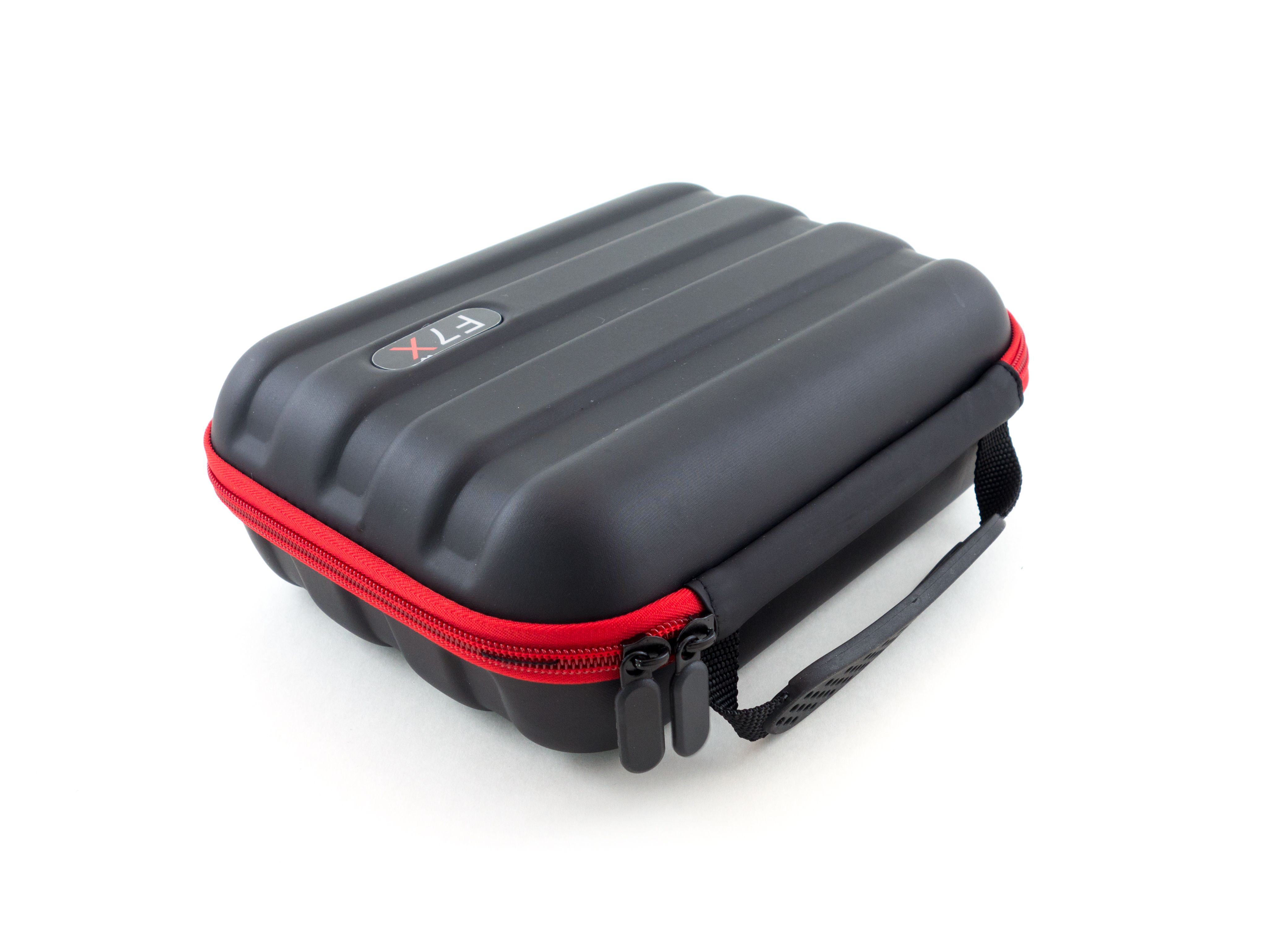
I wouldn't call these premium goggles, but they certainly came close. The packaging is quite nice and the included carrying case is great. It's got a silicone handle, a nice matte feel, a soft interior with a mesh pouch and even a carabiner to hang it. The plastic of the goggles themselves has a smooth matte finish and the buttons and sticks are a shiny black. They function well and don't feel like cheap buttons that'll break right away. The silicone mask feels great. It's got a smooth leathery feel and I enjoy using it without the foam covers. The head strap is quite nice with the Topsky branding stitched into it. Overall it doesn't feel like a cheap product and Topsky did a great job here.
Final Thoughts
My biggest complaint is not with the ghosting, the module bay size or even the light leakage. What bothers me the most is the white balance. The displays are slightly on the cool side. Topsky has since released a firmware update to address this, but it requires a USB programmer and opening up the goggles.
Update August 21, 2018: After several months of ownership and watching the community threads concerning these goggles I really cannot recommend them. My right display mysteriously formed a small brown spec which cannot be removed. There have been a number of reports of overheating issues and under the right conditions the displays may switch to black and white for a period of time. The newer Eachine EV200D is substantially better at a lower price, so check those out if you're interested in LCoS goggles.

Pros
- Large 42 degree FOV
- Module support
- Records at 720p
- Comfortable silicone mask
- Large 2200mah battery
- Battery charger included
Cons
- Ghosting
- White balance too cool
- Light Leakage
- DVR footage too dark
Disclaimer: This headset was provided courtesy of Banggood.com in exchange for a fair and unbiased review. This article utilizes affiliate links and purchasing any product mentioned here will help support RotorBuilds.com
Photos
Where to Buy
Show stores (1)I seriously cannot understand why a manufacturer would release goggles that don't have a 4:3 display mode. I don't know a single pilot that has 16:9 cams, and stretching 4:3 to 16:9 is a visually disgusting hack.
That said, if the forthcoming firmware fixes the issue, then that's great, and the fact that the firmware can be updated is another plus.

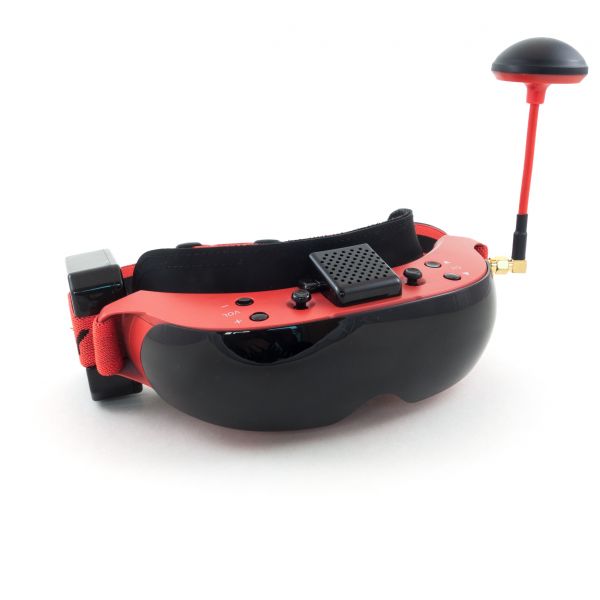




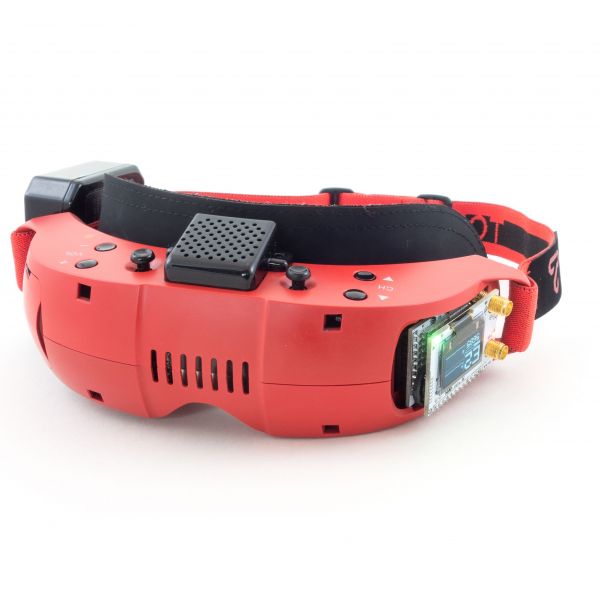
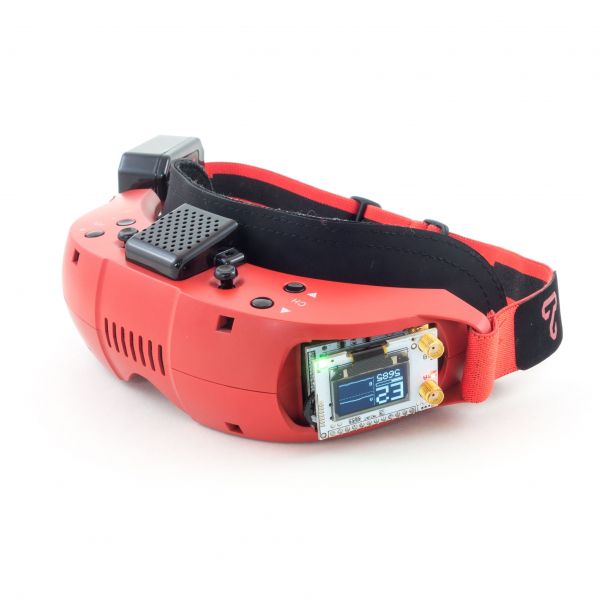
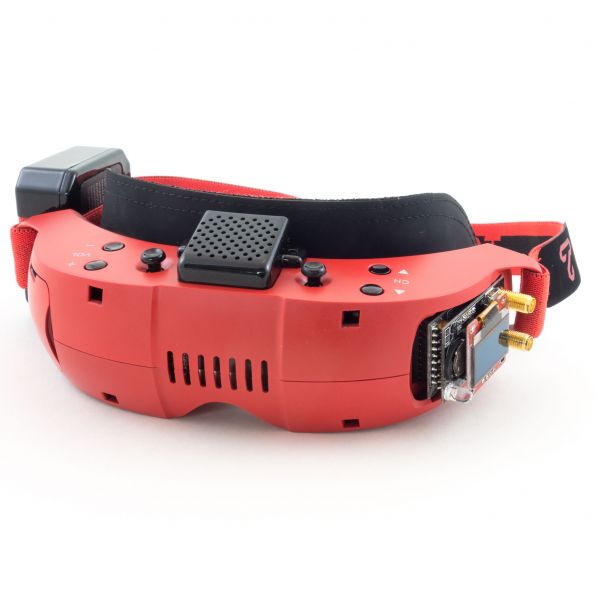
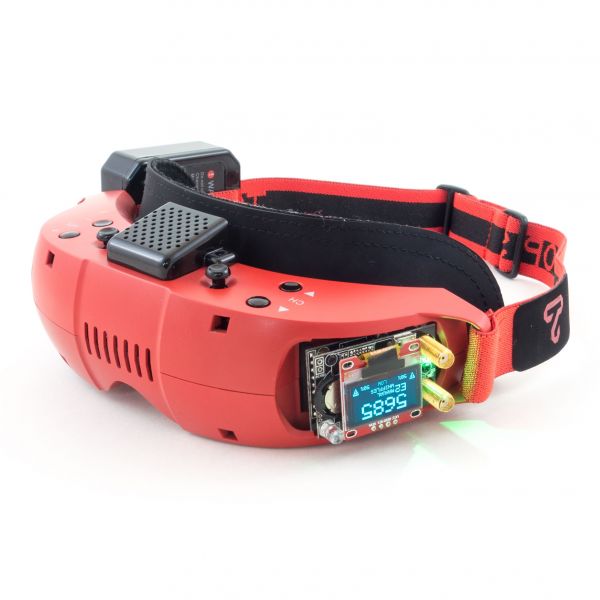
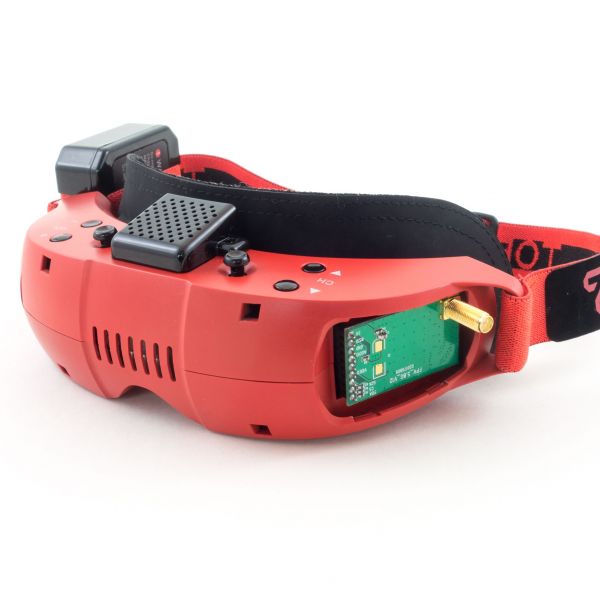
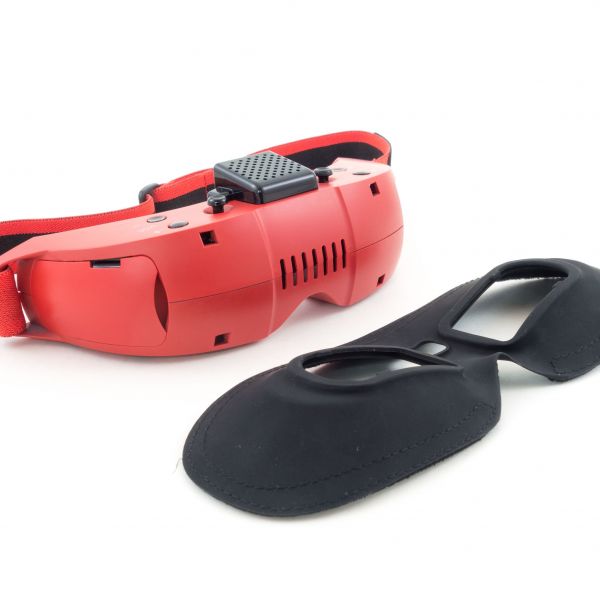
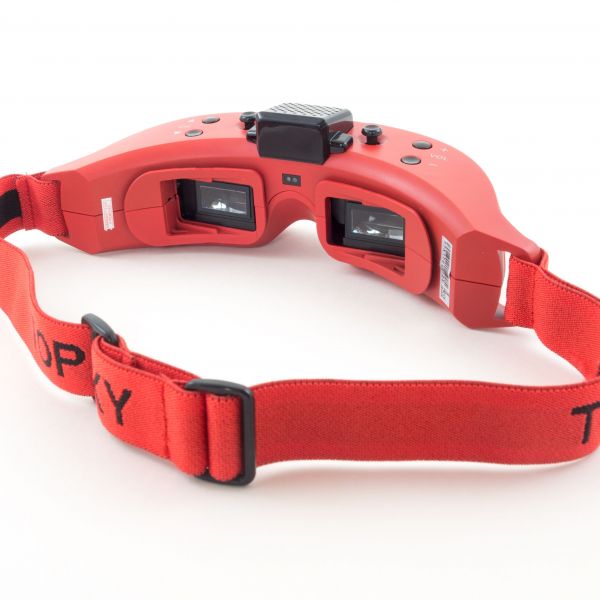
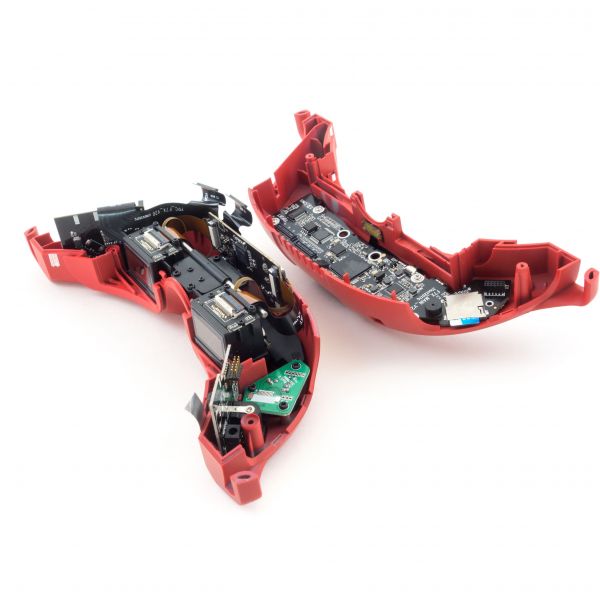
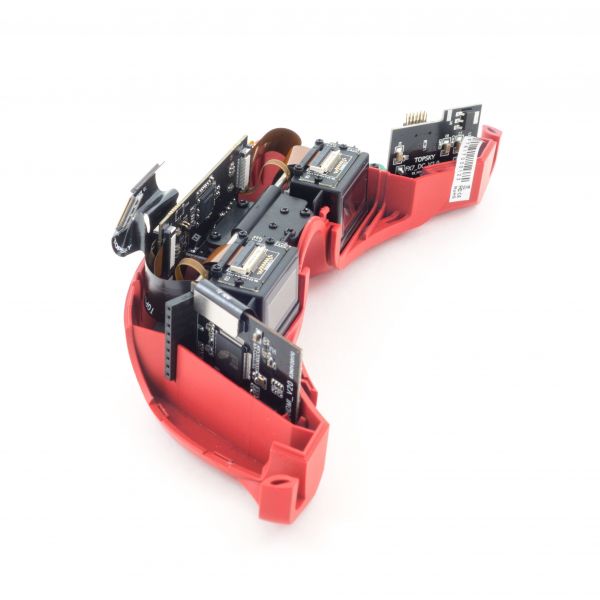
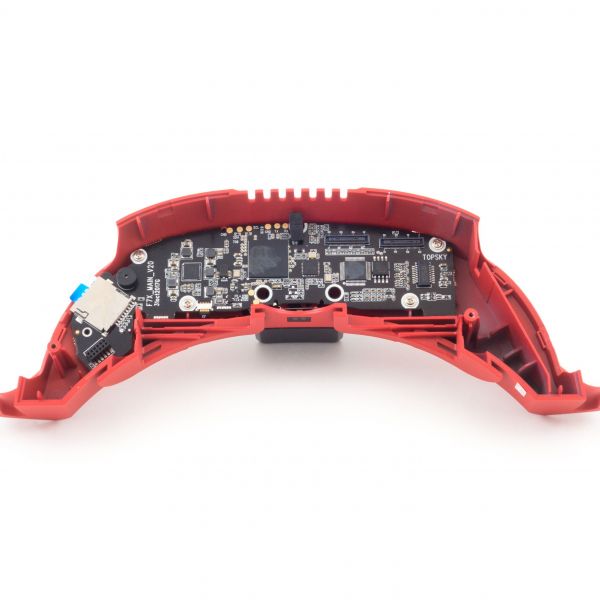
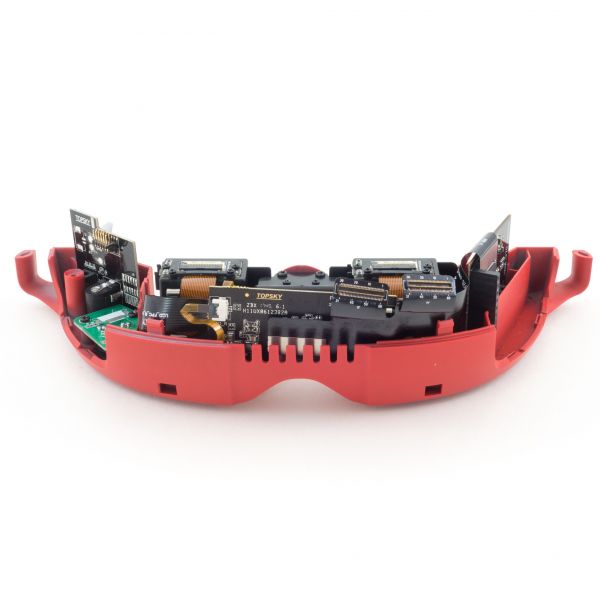
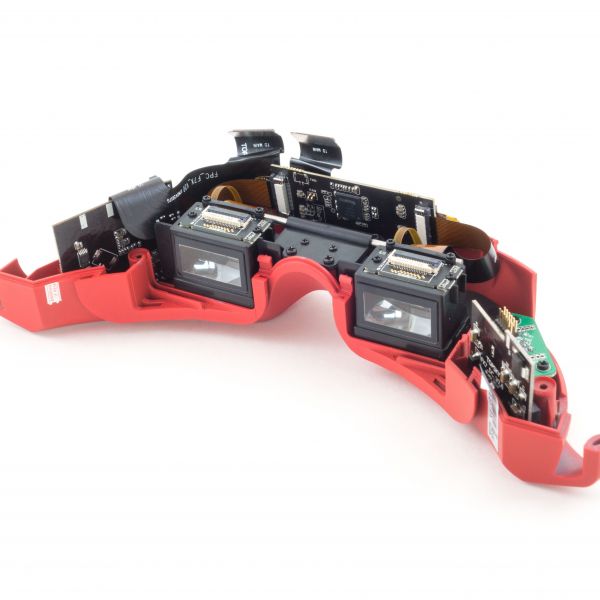
I finally had a chance to try Liftoff with these and the experience is quite good. The 720p displays make a huge difference over my HD3s. These are certainly the sim goggles to beat.